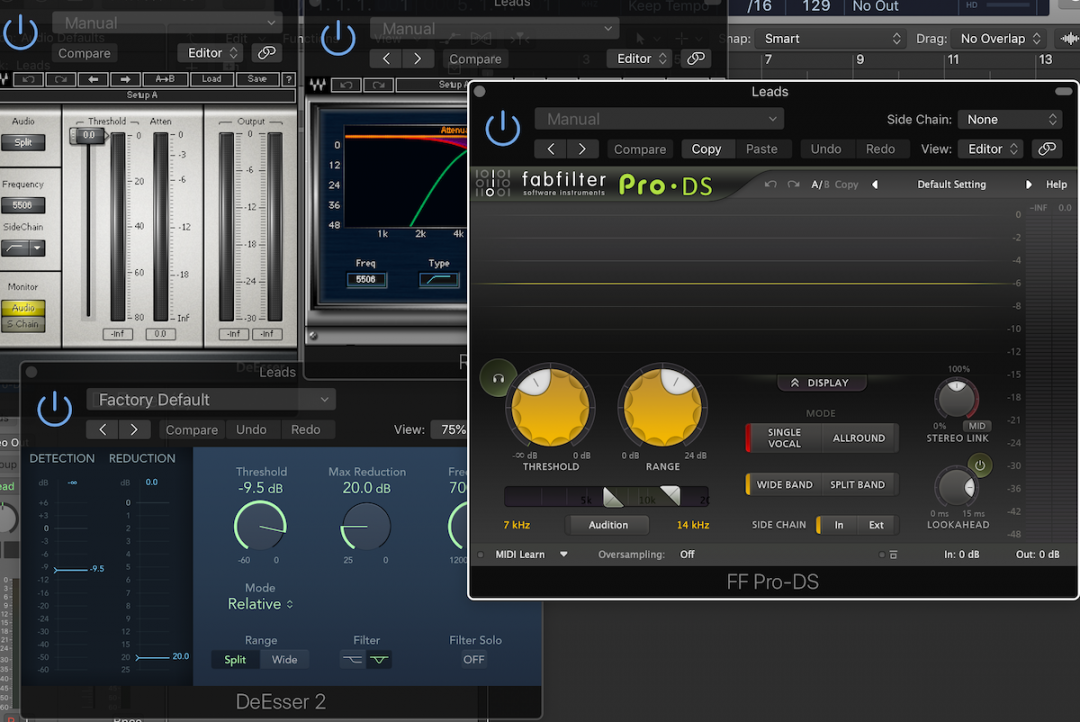In audio production, de-essing is an essential technique used to reduce or eliminate sibilance in vocal recordings. Sibilance refers to the harsh, hissing sounds that occur when certain consonant sounds, particularly S, Z, SH, CH, and J, are pronounced. These sounds can be quite distracting and unpleasant to the listener, so it’s crucial to address them during the mixing and mastering stages.
De-essing involves selectively attenuating the frequencies that contribute to sibilance while leaving the desired vocal frequencies intact. This technique allows for a more polished and professional-sounding vocal performance. Now, let’s dive deeper into the techniques used for de-essing vocals in audio production.

Credit: www.soundonsound.com
1. Frequency-based De-Essing
One common way to de-ess vocals is by using a frequency-based approach. This involves identifying the frequency range where the sibilant sounds occur most prominently and applying dynamic equalization to reduce those specific frequencies. Typically, de-essers have built-in frequency detectors that automatically detect the sibilant frequencies and apply compression to them, effectively reducing their impact.
By setting the threshold and ratio appropriately, you can achieve a balance between reducing sibilance and maintaining the natural character of the vocal. Be careful not to overdo it, as excessive de-essing can make the vocals sound dull or unnatural.
2. Dynamic Range Compressor Techniques
Another approach to de-essing involves using multiband or wideband compressors. With this technique, you split the vocal signal into multiple frequency bands and apply individual compression settings to each band. By adjusting the threshold, attack, and release parameters, you can selectively compress the sibilant frequencies, effectively reducing their intensity without affecting the rest of the vocal performance.
This technique allows for precise control over the de-essing process, as you can focus on specific frequency ranges where sibilance is most prominent. Experimenting with different compressor settings and band placement can help achieve the desired balance between reducing sibilance and maintaining a natural-sounding vocal performance.

Credit: producelikeapro.com
3. Manual Volume Automation
In certain cases, manual volume automation can be an effective technique for de-essing vocals. This involves manually reducing the volume of the sibilant sounds by adjusting the fader or using a gain envelope tool in your digital audio workstation (DAW). By visually identifying the sibilant peaks in the waveform display, you can manually attenuate their volume, effectively taming the sibilance.
This technique requires some patience and precision, as you need to carefully adjust the volume automation to maintain a natural-sounding vocal performance. However, it can be a useful approach when dealing with challenging or unique vocal recordings that may not be effectively addressed by automatic de-essing plugins.
Frequently Asked Questions For What Is The Technique For De-essing Vocals In Audio Production?
What Is De-essing In Audio Production?
De-essing is a technique to reduce harsh sibilant sounds in vocal recordings.
Why Is De-essing Important In Audio Production?
De-essing is important to maintain a balanced, smooth vocal sound without harsh ess sounds.
When To De-ess Vocals In Audio Production?
De-ess vocals during post-recording or mixing to address excessive sibilance.
How Does De-essing Work In Audio Production?
De-essing works by selectively compressing high-frequency sounds to reduce the intensity of sibilant consonants.
Conclusion
De-essing vocals is a crucial step in audio production to ensure a polished and professional-sounding vocal performance. Whether you opt for frequency-based de-essing, dynamic range compressor techniques, or manual volume automation, it’s essential to strike the right balance between reducing sibilance and maintaining the natural character and clarity of the vocals.
Remember to experiment with different settings, listen carefully, and make adjustments as needed. With practice and attention to detail, you can effectively de-ess vocals and achieve a professional mix that sounds great across various playback systems.